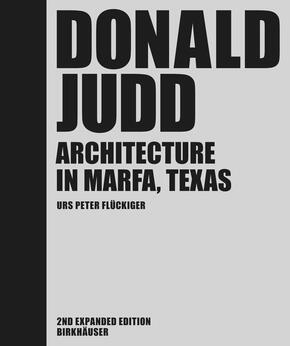Donald Judd - Architecture in Marfa, Texas
| Verlag | Birkhäuser Berlin |
| Auflage | 2021 |
| Seiten | 208 |
| Format | 21,4 x 2,1 x 25,3 cm |
| Gewicht | 985 g |
| ISBN-10 | 3035621616 |
| ISBN-13 | 9783035621617 |
| Bestell-Nr | 03562161A |
Donald Judd (1928-1994) ist einer der bedeutendsten Vertreter der amerikanischen Minimal Art. Zu den weniger bekannten Aspekten seiner Arbeit gehören die zahlreichen realisierten Architekturentwürfe, in denen er sich der Beziehung zwischen Architektur und Kunst, Arbeiten und Wohnen widmet. Bedeutsam für Judds Arbeit auf diesem Gebiet ist ein spezieller Ort: das Pionier-Dorf Marfa, ein ehemaliges Militärfort und andere Gebäude in der texanischen Wüste, die Judd für seine Zwecke adaptierte und systematisch zu einem der größten Ensemble von Gegenwartskunst weltweit ausbaute.
Die vorliegende Neuauflage aktualisiert und erweitert den erfolgreichen Titel Donald Judd. Architecture in Marfa, Texas, der 2007 beim Birkhäuser Verlag erschienen ist, um die Darstellung zwei weiterer Gebäudekomplexe südwestlich von Marfa sowie ein Nachwort des Autors, das Judds gebautes architektonisches Werk seit der 101 Spring Street in New York und den Gebäuden in Marfa in einen aktuellen Kontex t stellt.
Inhaltsverzeichnis:
Introduction: Foreword by Richard Guy Wilson
A Note about the Drawings
Donald Judd's Architecture in Marfa, Texas
La Mansana de Chinati
The Artillery Sheds
The Arena
The Chamberlain Building
The Architecture Studio
The Whyte Building
Las Casas, of Ayala de Chinati
Index of Donald Judd's Architectural Work
Acknowledgements
Bibliography and Credits
Donald Judd was one of the most important exponents of American Minimal Art. Among the lesser-known aspects of his work are the numerous built architectural projects in which he explores the relationship between architecture art, furniture, and landscape. One particular location was of great significance to Judd's architectural work: Fort D.R. Russell, a former US military base in the Chihuahuan desert on the southern edge of the pioneer town of Marfa, Texas. Judd acquired the fort and other structures in Marfa which he systematically converted into one of the largest ensemble collections of contemporary art in the world.
This new edition updates and expands on the successful book of 2007. It presents two additional building complexes southwest of Marfa and includes a new epilogue by the author, which places Judd's built architectural work from its beginning at 101 Spring Street, Judd's studio and residence in New York, and the structures in Marfa in a contemporary cont ext.




















